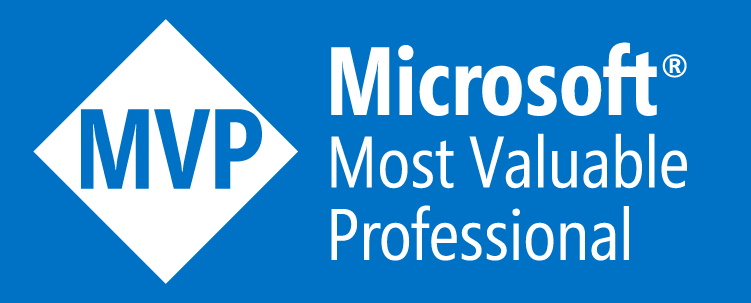What’s coming 2020 release wave 2 plan – my takes

Microsoft Dynamics 365 and Microsoft Power Platform 2020 release wave 2 plans are out, check out the full list Microsoft Dynamics 365: https://docs.microsoft.com/en-us/dynamics365-release-plan/2020wave2/ Microsoft Power Platform: https://docs.microsoft.com/en-us/power-platform-release-plan/2020wave2/ These features will be available from October 2020 through March 2021 2020 release wave 1 plan which are from April 2020 through September 2020 What’s new and planned for Dynamics 365 Finance features list can be viewed from here https://docs.microsoft.com/en-us/dynamics365-release-plan/2020wave2/finance-operations/dynamics365-finance/planned-features What I liked most is listed 💗 Touchless email reminders to customers We often have to set alerts for payment reminders based on certain conditions (e.g. overdue) but with this touchless email reminders features, it will give you more peace of mind by automatically sending email reminders might initiate an activity that encourages payment sooner than would be made without the reminder. When enabled, email reminders will be sent automatically to customers, with a list containing overdue invoice information based on email templates. Configurable business documents conversion to PDF This has been a very common requirement even in AX 2009 and AX 2012 and now in Finance and Supply change management to have documents convert to PDF e.g. when printing reports on screen or download. Having enabled this new feature let you any business document generated in Excel or Word to be converted to PDF. You can use the PDF conversion option to convert the output in Microsoft Office format (Excel/Word) to PDF format. Make PDF conversion available To make the PDF conversion option available in the current Finance instance, open the Feature management workspace, and turn on the Convert Electronic Reporting outbound documents from Microsoft Office formats to PDF feature. Finance and Operations cross-app capabilities MS has done a fantastic job in bringing Finance and Operations data natively available in CDS through Data Integrator and Dual Write. With this release wave, more features are coming to streamline this process and enhance digital transformation. These features are going to be person opt-in enabled which allows customers to adopt new features at their own cadence and are not forced with 8 updates of the year from MS. Lifecycle Services (LCS) new enhanced experience consistent for all Dynamics and Power Platform users. Enhanced view with issues categories A context-based document search experience More visibility to known issues and status for the impacted product versions through Knowledgebase suggestions. New grid control with a lot more advanced features You may have already used some of these features and have experienced issues e.g. You might run into situations occasionally where the grid headers and data are misaligned, or the grid jumps while you scroll through data or create new records. Grid capabilities https://docs.microsoft.com/en-us/dynamics365/fin-ops-core/fin-ops/get-started/grid-capabilities Benefits at glance · Performance · Positional scrolling · General improvements · Reorder columns · Mathematical formulas · Totals · Fast data entry Task recorder with enhanced capabilities Improvements to allow coverage of additional scenarios by regression tests and to improve the experience of users creating and maintaining these regression tests. Saved views – general availability https://docs.microsoft.com/en-us/dynamics365/fin-ops-core/fin-ops/get-started/saved-views Data and process integration – My favorite 💓 Finance and Operations data natively in Common Data Service Release wave 1 features for dual write is: 112 entities are supported – that’s a pretty big number so hats off to MS to achieve this in record time. Customers, Vendors, and Products integration between FO and CE Company concept in CDS On-demand pricing from Finance and Operations apps Integrated quotes, orders, invoices, and assets Reference data from finance, tax, account receivable and accounts payable Release wave 2 targets: Support for Dynamics 365 Commerce scenarios on Common Data Service Party model, activities and notes, and services Generic Dual Write enhancements and error handlings Finance and Operations data in Azure Data Lake Storage Gen2 · Available in all supported regions · The transition from BYOD and Entity Store to Azure Data Lake Storage Gen2
D365FO – How to read metadata information from AOT through X++

Following code snippet loop through metadata information of AOT objects (this example is to loop through all data entities). class DataEntityExtension { /// <summary> /// Runs the class with the specified arguments. /// </summary> /// <param name = “_args”>The specified arguments.</param> public static void main (Args _args) { DMFEntityTableExtension entityTableExtension; var entityNames = Microsoft.Dynamics.Ax.Xpp.MetadataSupport::GetDataEntityViewNames(); Var enumerator = entityNames.getEnumerator(); while (enumerator.MoveNext()) { enumerator.MoveNext(); Microsoft.Dynamics.AX.Metadata.MetaModel.AxDataEntityView axDataEntity = Microsoft.Dynamics.Ax.Xpp.MetadataSupport::GetDataEntityView(enumerator.Current); if (axDataEntity) { entityTableExtension.Label = SysLabel::labelId2String(axDataEntity.Label); entityTableExtension.PublicEntityName = axDataEntity.PublicEntityName; entityTableExtension.PublicCollectionName = axDataEntity.PublicCollectionName; entityTableExtension.EntityName = axDataEntity.Name; entityTableExtension.IsPublic = axDataEntity.IsPublic; entityTableExtension.insert(); info(strFmt(“Entity Name: %1 — Entity Label; %2 — Entity public collection Name: %3 — Entity Public Name %4 — Is Entity Public – %5”, axDataEntity.Name, SysLabel::labelId2String(axDataEntity.Label), axDataEntity.PublicCollectionName, axDataEntity.PublicEntityName, axDataEntity.IsPublic)); } } } } OUTPUT:
D365FO – Rotate SSL Certificates in Tier 1 environments

If you face following error all of a sudden when accessing tier 1 environment like I faced, follow next steps in the post to get it working. The SSL certificate has been expired and requires renewal How to renew the certificate? The easiest way is to do through LCS Go to Environment details page | Maintain | Rotate secrets | Rotate SSL Certificates Click OK on next opened screen, environment status changes to Rotating secrets. Important: This does little bit time so better plan it accordingly. Refresh environment details page and wait for it to turn to Deployed state and access, it should be fine now.
D365FO – Start hierarchy approval with specific worker

There are times when clients want to start hierarchy approval from a specific worker and not from the one who initiated the workflow and then traverse up the hierarchy. Scenario: Invoices are coming from third-party into FinOps and creating tax invoice registers Setting the Approved by field at tax invoice register line level AP Clerk/Administrator assigns these invoices to correct worker for approval So, in the above scenario, the AP clerk initiated the workflow but the workflow will not go his/her line manager for approval instead it will be assigned to the owner (approved by) of the invoice. This is what we want to achieve – add a new Start from This Start from list get populated through getSupportedDataType() in class WorkflowHierarchyProviderHelper Create a new event handler class and subscribe to the delegate as shown below. P.S. WFOwner is the custom created EDT. class ECL_WorkflowHierarchyProviderHelperEventHandler { [SubscribesTo(classstr(WorkflowHierarchyProviderHelper), delegatestr(WorkflowHierarchyProviderHelper, addAdditonalSupportedDataTypesDelegate))] static void addAdditonalSupportedDataTypesDelegate(Set _supportedDataTypes) { _supportedDataTypes.add(extendedTypeStr(WFOwner)); } } Add a new field on LedgerJournalTable and assign the WFOwner EDT to it. LedgerJournalTable is for reference as the above change is implemented for vendor invoice approval.
D365FO – Add new participant and type of participant to Participant workflow element

There are times when you want to add a new type of participant other than security role participants and user group participants, this post describes the steps to take and achieve this requirement. This is the final output Let’s find out how did it work. This is how each type of participant exists in AOT so a new Workflow Participant Assignment Provider needs to be created in order to see it in the Type of participant list as for this example ‘Vendor invoice approval provider’ is being added. Created a new Workflow Participant Assignment Provider with the following properties. Available For All Workflow Templates = No [Just want to have this new Participant type vendor invoice approval workflow] Added new workflow type and link it with VendInvoiceApprovalJournalTemplate which is the workflow type name for Vendor tax invoice approval journal workflow Each provider has a Provider class and here is an example of the class used for above created participant provider class FF_VendInvoiceWFParticipantProviderExpend extends WorkflowParticipantProvider_Expend { const str owner = ‘OWNER’; public WorkflowParticipantExpenDocumentType documentType() { return WorkflowParticipantExpenDocumentType::VendInvoice; } public WorkflowParticipantTokenList getParticipantTokens() { WorkflowParticipantTokenList tokenList = WorkflowParticipantTokenList::construct(); tokenList = super(); tokenList.add(owner, ‘@SYS77709’); return tokenList; } /// <summary> /// Resolves the vendor invoice line dimensions to a list of users /// </summary> /// <param name=”_context”> /// An instance of the <c>WorkflowContext</c> class /// </param> /// <param name=”_participantTokenName”> /// The participant token that is selected for a role-based assignment. /// </param> /// <returns> /// An instance of the <c>WorkflowUserList</c> class that contains the enabled users from the token /// </returns> /// <exception cref=”M:Exception::Error”> /// Participant token does not exist /// </exception> public WorkflowUserList resolve(WorkflowContext _context, WorkflowParticipantToken _participantTokenName) { LedgerJournalTable ledgerJournalTable = this.getLedgerJournalTableFromContext(_context); WorkflowUserList userList = WorkflowUserList::construct(); if (_participantTokenName == owner) { userList.add(DirPersonUserEx::worker2UserId(LedgerJournalTable::findRecId(_context.parmRecId()).FF_Originator)); } return userList; } /// <summary> /// Gets the <c>LedgerJournalTable</c> record from the workflow context. /// </summary> /// <param name = “_context”>The workflow context.</param> /// <returns>A <c>LedgerJournalTable</c> record.</returns> private LedgerJournalTable getLedgerJournalTableFromContext(WorkflowContext _context) { LedgerJournalTable ledgerJournalTable; if (_context.parmTableId() == tableNum(LedgerJournalTable)) { ledgerJournalTable = LedgerJournalTable::findRecId(_context.parmRecId()); } else if (_context.parmTableId() == tableNum(LedgerJournalTable)) { ledgerJournalTable = LedgerJournalTrans::findRecId(_context.parmRecId(), false).ledgerJournalTable(); } return ledgerJournalTable; } /// <summary> /// Validates that the <c>WorkFlowContext</c> has the expected tables. /// </summary> /// <param name = “_context”>The workflow context.</param> /// <returns>true if the expected tables are found; otherwise, false.</returns> private boolean doesContextHaveExpectedTable(WorkflowContext _context) { return _context.parmTableId() == tableNum(LedgerJournalTable) || _context.parmTableId() == tableNum(LedgerJournalTrans); } public static FF_VendInvoiceWFParticipantProviderExpend construct() { return new FF_VendInvoiceWFParticipantProviderExpend(); } } If your interested to know how it used to work in AX 2012, follow this link https://dynamicsnavax.blogspot.com/2009/12/ax-workflow-direct-approver.html
D365FO – How not to select Fleet Management modules in package creation
Want assurance that you never select/include fleet management modules in package creation or build all module together. Just rename the Descriptor folder from all these three locations and refresh models in VS first time to reflect the changes.<Service volume drive>:AosServicePackagesLocalDirectoryFleetManagement<Service volume drive>:AosServicePackagesLocalDirectoryFleetManagementExtension<Service volume drive>:AosServicePackagesLocalDirectoryFleetManagementUnitTests
D365FO – Get list of obsolete data entities
Find which data entity is obsolete after every new update. Here are the steps. For example; Customers V2 data entity is obsolete with version 8.0 For developers: Type the below in the metadata search in VSTS: type:dataentityview property:isobsolete=yes
D365 platform update 12 (7.3): Admin access changes
The Microsoft team did release platform update 12 for Dynamics 365 for Finance and Operations, Enterprise Edition 7.3. There have been few changes concerning accessibility (admin access on VMs). Starting with platform update 12 users do not have admin access to D365 VMs hosted on the Microsoft subscription. Which means: 1. You can only log in with the “builtinUserxxxxxxxxx” account and not the “builtinaxlocaladmin” account anymore. Prior to PU12 7.3 With PU12 7.3 2. IIS Express is used as the web server instead of IIS 3. IIS Express runs when Visual Studio is running 4. Visual Studio cannot be run as Administrator anymore (you are not the local admin anymore on your development VM L ). Just double click Visual Studio shortcut or run it from start. Admin access to development virtual machines can only be achieved with following options; 1. Host a development VM on a separate Azure subscription 2. Deploy VM with an older platform update than PU12 and then upgrade platform update (This option will not work for 7.3) Reference: https://community.dynamics.com/ax/b/newdynamicsax/archive/2018/01/05/restricted-admin-access-on-development-vms-with-platform-update-12-what-you-need-to-know
Newly created data entity is not visible in data management entity list?
If you created a new data entity and it’s not visible in your data management entity list. Open Data Management workspace -> Framework parameters -> Entity Settings and hit the “Refresh Entity List” button
D365FO: How to debug a non-development and a non-production environment
This post outlines the steps how to debug an issue which is happening in non-development or non-production environments e.g. UAT environment. 1. RDP to your environment where you want to debug the issue, with this example I am connecting to UAT (Sandbox). 2. Connect to SQL server a. Get the server name from LCS database accounts b. Use .database.windows.net to connect to database 3. Create a new SQL sign-in that the developer can use. This step lets the system administrator maintain the security of the sandbox environment. The developer will have access to one database for only a limited time. Use the following code to create the new SQL sign-in. CREATE USER devtempuser WITH PASSWORD = ‘pass@word1’ EXEC sp_addrolemember ‘db_owner’, ‘devtempuser’ 4. Stop following services in development box a. IIS or world wide web publishing service development box b. Microsoft Dynamics 365 unified Operations: Batch Management service 5. Go to J:AosServiceWebRootweb.config. 6. Save a copy of the original web.config file, so that you can switch back later. I copied file in the same directory and renamed the web.config to webDev.config and copied one to web.config 7. Edit the following section in the web.config file. Before your changes <add key=”DataAccess.Database” value=”AxDB” /> <add key=”DataAccess.DbServer” value=”devDbServerName” /> <add key=”DataAccess.SqlPwd” value=”password” /> <add key=”DataAccess.SqlUser” value=”axdbadmin” /> After your changes <add key=”DataAccess.Database” value=”sandboxdatabaseServerName” /> <add key=”DataAccess.DbServer” value=” sandboxdbName.database.windows.net” /> <add key=”DataAccess.SqlPwd” value=”P@ssw0rd” /> <add key=”DataAccess.SqlUser” value=”devtempuser” /> 8. Start IIS or world wide web publishing service 9. Do not start batch service otherwise your batch jobs of development box will start writing into UAT environment. Be careful with this step!!! 10. Now, connect to your development box from browser. Oops!!! It does not connect and throw an error. Don’t worry let’s jump into event log and see what’s in there Okay; so it is an access issue and here is the resolution for it. 11. Execute the following command against Master database in UAT database server. IP address you get from the event viewer. exec sp_set_firewall_rule N’PPDEV01′, ‘13.70.85.22’, ‘13.70.85.22’ Note: Restart IIS and make sure application pool is started 12. Connect to development URL again from browser and this time it works. You can now access UAT database (all legal entities etc.) 13. Restart or your start your VS in development box and attach to Process w3wp.exe to troubleshoot the issue(s) Done with your debugging and got the resolution J 14. Now it is time to remove devtempuser from UAT database, this prevents having the permanent access to the sandbox database. Right-click on the devtempuser user under Sabndoxdatabase | Security | Users and delete it. 15. Stop IIS. 16. Revert changes from the web.config file or simply delete the copied one and rename the original one from WebDev to Web. 17. Start IIS. 18. Start batch service 19. Connect to development environment URL and make sure it is connected to development database. Reference: https://docs.microsoft.com/en-us/dynamics365/unified-operations/dev-itpro/dev-tools/debugx-issue-against-copy-of-production

